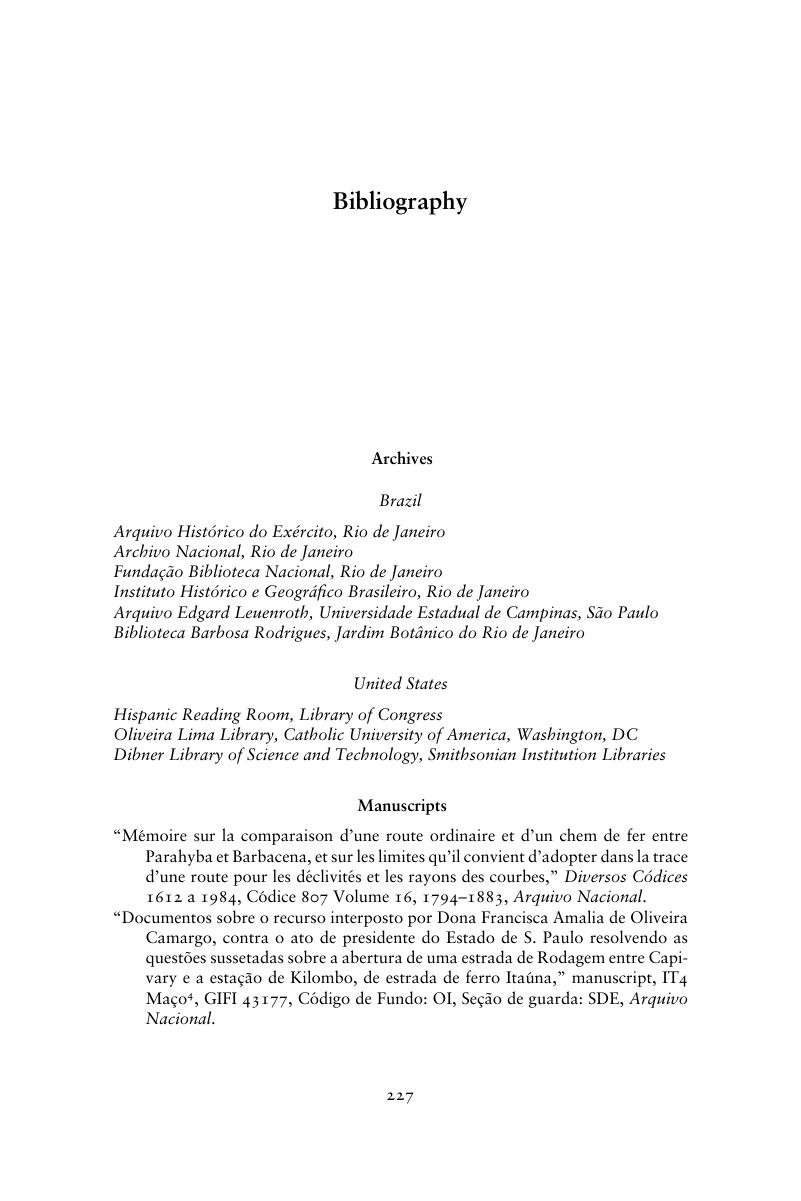Book contents
- Industrial Forests and Mechanical Marvels
- Industrial Forests and Mechanical Marvels
- Copyright page
- Contents
- Figures and Map
- Notes on Orthography
- Glossary
- Book part
- Preface
- 1 Nineteenth-Century Modernization in Brazil
- 2 The Vocabulary of Brazilian Modernization
- 3 Industrial Forests
- 4 The Most Useful of Instruments
- 5 Road-Building and Railroads
- 6 Trolleys, Railroads, and Factories, or Civilization and Barbarism
- Conclusion
- Bibliography
- Index
- References
Bibliography
Published online by Cambridge University Press: 05 August 2016
- Industrial Forests and Mechanical Marvels
- Industrial Forests and Mechanical Marvels
- Copyright page
- Contents
- Figures and Map
- Notes on Orthography
- Glossary
- Book part
- Preface
- 1 Nineteenth-Century Modernization in Brazil
- 2 The Vocabulary of Brazilian Modernization
- 3 Industrial Forests
- 4 The Most Useful of Instruments
- 5 Road-Building and Railroads
- 6 Trolleys, Railroads, and Factories, or Civilization and Barbarism
- Conclusion
- Bibliography
- Index
- References
Summary

- Type
- Chapter
- Information
- Industrial Forests and Mechanical MarvelsModernization in Nineteenth-Century Brazil, pp. 227 - 248Publisher: Cambridge University PressPrint publication year: 2016



